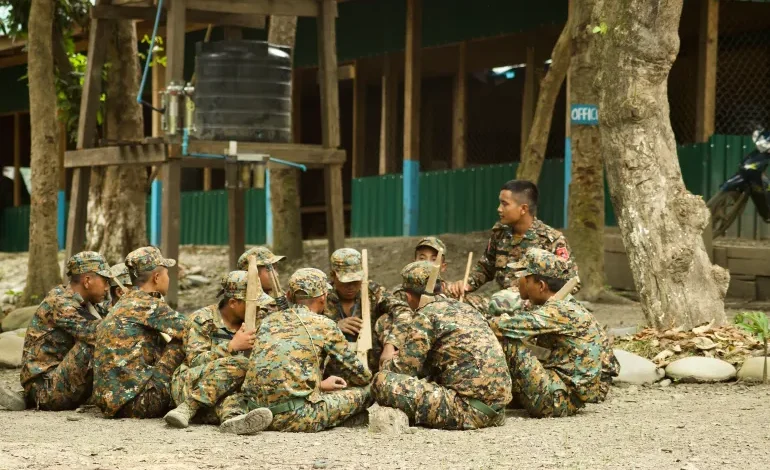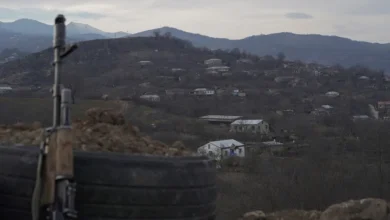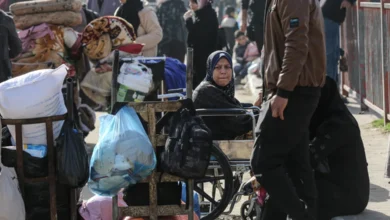Fears of escalation after Myanmar air raids near India border

On the afternoon of January 10, Van Bawi Mang, a member of an armed resistance group fighting against the Myanmar military, was resting in his barracks at a camp on the country’s northwestern border with India when a loud explosion jolted him back to the reality of war.
He scrambled into a nearby ditch as jet fighters flew overhead, glass shattering with the reverberation of the falling bombs.
The camp, known as Camp Victoria, serves as the headquarters of the Chin National Front (CNF), an ethnic armed organisation that resumed its dormant fight for autonomy after the Myanmar military seized power in a coup in February 2021.
The CNF has also aligned itself with the nationwide pro-democracy movement, fighting alongside newer resistance groups formed in response to the coup.
Even after the jets retreated on January 10, Van Bawi Mang and his comrades spent a sleepless night huddling in ditches and bunkers across the camp, fearing more attacks.
The night passed without further incident but the military struck again the following afternoon. In total, five CNF members were killed in the two attacks and there was significant damage to the camp’s buildings, including housing for families and a medical centre.
The Myanmar military has not issued any statement about the attacks, which come amid a months-long escalation in fighting in Chin State. Although the military has scaled up its use of airstrikes in recent months, the incident marks the first it has aimed at a resistance group’s headquarters.
The attacks not only highlight the generals’ increasingly brazen attempts to root out resistance to their rule, but also their willingness to venture close to the country’s western borders to do so.
Camp Victoria sits adjacent to the Tiau river, which separates Myanmar from the Indian state of Mizoram. The recent attacks violated Indian airspace and soil, according to the CNF, local Mizo organisations, and the international research and advocacy organisation Fortify Rights.
Myanmar Witness, an independent nonprofit that uses open-source data to investigate human rights incidents, found the attacks were an “almost certain breach of Indian airspace” as well as a “likely attack on Indian sovereign territory”.










